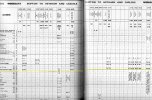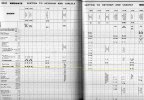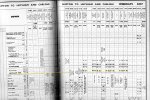Chrius56000
Member
- Joined
- 18 Aug 2010
- Messages
- 46
Just a quickie one!
Can anyone suggest why the home signal 33 that admitted trains to the original three Heysham Harbour Station Platforms was a colour–light when all the rest of the station layout was Semaphore?
The 1970 layout diagram here:–
. . .The Distant signal for the Home No. 33 also had a note appended to it – "operates for platform 3 only" (the distant doesn't have a number shown) – were there any other colour–light distant signals approaching termini that operated like this?
Would I be correct in saying that the Heysham Harbour distant could have been cleared to green only for Platform 3 if the Home Signal 33 was set for that route, and always displayed yellow for Platforms 1 and 2?
What signalling was used after B.R. resited Heysham Harbour and replaced the signal box in 1970?
Chris Williams
Can anyone suggest why the home signal 33 that admitted trains to the original three Heysham Harbour Station Platforms was a colour–light when all the rest of the station layout was Semaphore?
The 1970 layout diagram here:–
. . .The Distant signal for the Home No. 33 also had a note appended to it – "operates for platform 3 only" (the distant doesn't have a number shown) – were there any other colour–light distant signals approaching termini that operated like this?
Would I be correct in saying that the Heysham Harbour distant could have been cleared to green only for Platform 3 if the Home Signal 33 was set for that route, and always displayed yellow for Platforms 1 and 2?
What signalling was used after B.R. resited Heysham Harbour and replaced the signal box in 1970?
Chris Williams
Last edited:



